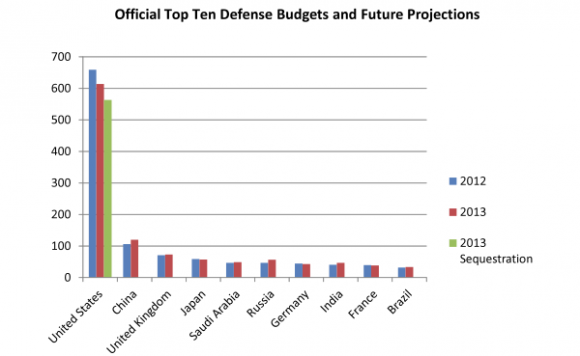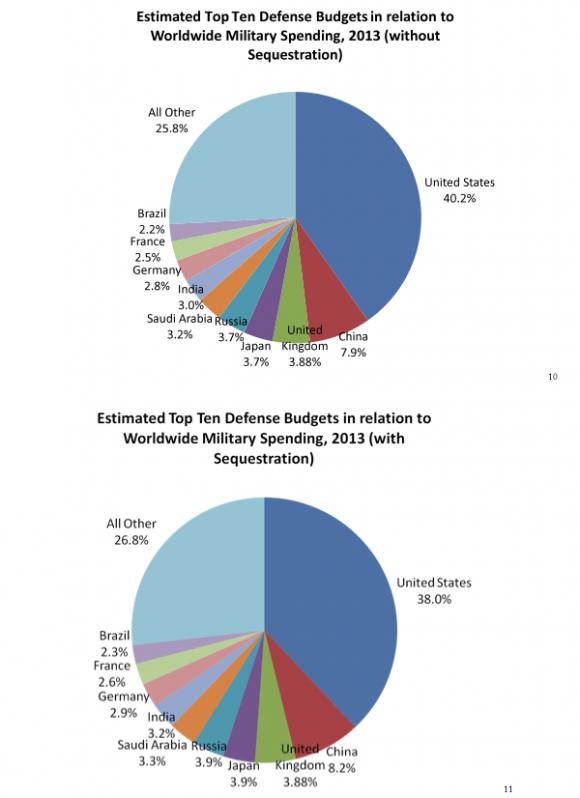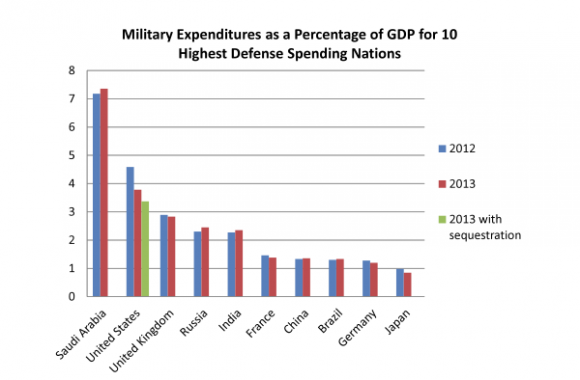A U.S. Air Force F-22 Raptor over the Atlantic Ocean.
Part Two of Five
In the opening article, we saw how a massive and growing debt (as well as a dose of bad politics) has set America on a path towards sequestration, or, at the very least ,the potential of serious levels of defense cuts. But to understand the actual impact that these cuts might have, including weighing the predictions that such a scenario would “destroy the U.S. military” or mean the U.S. would be “unable to keep up with potential adversaries,” it is useful to pull back and examine where the U.S. defense budget stands in relation to the rest of the world.
(MORE: Sequestration and What It Would Do to U.S. Military Power)
The U.S. is the only global superpower, with capabilities and responsibilities that dwarf any and every other state in the world. And, as the below charts show, the U.S. defense budget reflects that reality, outspending all other nations by a significant amount. What is notable about the scale of the U.S. budget is not just its relative size to other nations, but also how many other of the major players (albeit an order of magnitude smaller) are close U.S. allies, like the UK or Japan, or unlikely foes, like India or Brazil. Only two of the top ten, China and Russia could be put in the category of potential adversaries.
 Another way to visualize this is to combine all the world’s military spending together. At the height of the Iraq war, U.S. spending was above half of all the world’s military spending, but is now down to slightly above 40% of all military spending. Sequestration would take it down by about 2 percentage points more of the pie, roughly 38% of all global military spending, excluding any likely contingency or war spending.
Another way to visualize this is to combine all the world’s military spending together. At the height of the Iraq war, U.S. spending was above half of all the world’s military spending, but is now down to slightly above 40% of all military spending. Sequestration would take it down by about 2 percentage points more of the pie, roughly 38% of all global military spending, excluding any likely contingency or war spending.
Indeed, it is only in terms of percent of GDP that the U.S. is not ahead, in second place to Saudi Arabia. But here again, sequestration doesn’t change the overall ranking.
As a side note, one of the fascinating disconnects in American politics today is between the above data and public perceptions of defense spending, which many unfortunately are quick to exploit in our “post truth” era of politics. Only 58% of voters are aware that the US spends more on defense than any other country in the world. And just 33% recognize that America spends almost as much on defense as the rest of the world combined.
Part 1: A sequestration primer
Part 2: Comparing defense budgets, apples to apples
Part 3: A case study: east Asia
Part 4: Impact on the Korean peninsula
Part 5: Stupid, but not disastrous
Peter W. Singer is director of the 21st Century Defense Initiative at Brookings. Check here for the full list of source material for this series of articles.
MORE: A Smarter Way to Trim the Pentagon Budget




